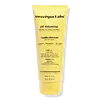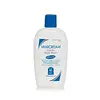What's inside
What's inside
 Benefits
Benefits

 Concerns
Concerns

 Ingredients Side-by-side
Ingredients Side-by-side

Water
Skin ConditioningAloe Barbadensis Leaf Juice
Skin ConditioningSodium Cocoyl Isethionate
CleansingCocamidopropyl Hydroxysultaine
CleansingSodium Lauroamphoacetate
CleansingCaprylyl/Capryl Glucoside
CleansingGlycol Distearate
EmollientSodium Methyl Cocoyl Taurate
CleansingPropanediol
SolventButyrospermum Parkii Butter
Skin ConditioningHelianthus Annuus Seed Oil
EmollientCocos Nucifera Oil
MaskingPrunus Armeniaca Kernel Oil
MaskingSimmondsia Chinensis Seed Oil
EmollientPanthenol
Skin ConditioningBetaine
HumectantHydroxypropyl Guar Hydroxypropyltrimonium Chloride
Citric Acid
BufferingXanthan Gum
EmulsifyingTrisodium Ethylenediamine Disuccinate
Ethylhexylglycerin
Skin ConditioningBenzoic Acid
MaskingPhenoxyethanol
PreservativeParfum
MaskingWater, Aloe Barbadensis Leaf Juice, Sodium Cocoyl Isethionate, Cocamidopropyl Hydroxysultaine, Sodium Lauroamphoacetate, Caprylyl/Capryl Glucoside, Glycol Distearate, Sodium Methyl Cocoyl Taurate, Propanediol, Butyrospermum Parkii Butter, Helianthus Annuus Seed Oil, Cocos Nucifera Oil, Prunus Armeniaca Kernel Oil, Simmondsia Chinensis Seed Oil, Panthenol, Betaine, Hydroxypropyl Guar Hydroxypropyltrimonium Chloride, Citric Acid, Xanthan Gum, Trisodium Ethylenediamine Disuccinate, Ethylhexylglycerin, Benzoic Acid, Phenoxyethanol, Parfum
 Reviews
Reviews

Ingredients Explained
These ingredients are found in both products.
Ingredients higher up in an ingredient list are typically present in a larger amount.
Citric Acid is an alpha hydroxy acid (AHA) naturally found in citrus fruits like oranges, lemons, and limes.
Like other AHAs, citric acid can exfoliate skin by breaking down the bonds that hold dead skin cells together. This helps reveal smoother and brighter skin underneath.
However, this exfoliating effect only happens at high concentrations (20%) which can be hard to find in cosmetic products.
Due to this, citric acid is usually included in small amounts as a pH adjuster. This helps keep products slightly more acidic and compatible with skin's natural pH.
In skincare formulas, citric acid can:
While it can provide some skin benefits, research shows lactic acid and glycolic acid are generally more effective and less irritating exfoliants.
Most citric acid used in skincare today is made by fermenting sugars (usually from molasses). This synthetic version is identical to the natural citrus form but easier to stabilize and use in formulations.
Read more about some other popular AHA's here:
Learn more about Citric AcidPanthenol is a common ingredient that helps hydrate and soothe the skin. It is found naturally in our skin and hair.
There are two forms of panthenol: D and L.
D-panthenol is also known as dexpanthenol. Most cosmetics use dexpanthenol or a mixture of D and L-panthenol.
Panthenol is famous due to its ability to go deeper into the skin's layers. Using this ingredient has numerous pros (and no cons):
Like hyaluronic acid, panthenol is a humectant. Humectants are able to bind and hold large amounts of water to keep skin hydrated.
This ingredient works well for wound healing. It works by increasing tissue in the wound and helps close open wounds.
Once oxidized, panthenol converts to pantothenic acid. Panthothenic acid is found in all living cells.
This ingredient is also referred to as pro-vitamin B5.
Learn more about PanthenolPropanediol is an all-star ingredient. It softens, hydrates, and smooths the skin.
It’s often used to:
Propanediol is not likely to cause sensitivity and considered safe to use. It is derived from corn or petroleum with a clear color and no scent.
Learn more about PropanediolWater. It's the most common cosmetic ingredient of all. You'll usually see it at the top of ingredient lists, meaning that it makes up the largest part of the product.
So why is it so popular? Water most often acts as a solvent - this means that it helps dissolve other ingredients into the formulation.
You'll also recognize water as that liquid we all need to stay alive. If you see this, drink a glass of water. Stay hydrated!
Learn more about Water